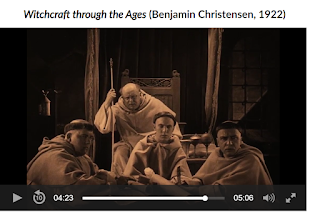Denmark
In Denmark, Ole Olsen’s Nordisk films
1)continued to dominate production,
2) though a small number of other firms operated during the 1910s. From 1913 to 1914,
3)Nordisk and other companies were moving toward longer films of two, three, even four
reels.
4)One historian has summarized the typical style of Nordisk’s films:
“The lighting effects, the stories, the realism of interior settings, the extraordinary use of natural and urban locations, the intensity of the naturalistic acting style, the emphasis on fate and the passions.”
August Blom
1) The work of August Blom,
2) Nordisk’s top director of the early teens, typifies this style.
3)His most important film was Atlantis (1913),
4)at eight reels the longest Danish film to date.
5)The film offered a fairly conventional psychological melodrama,
but it dwelt on beautifully designed sets and spectacular scenes,
6)such as the sinking of an ocean liner (inspired by the Titanic disaster of 1912).
7)Atlantis was triumphantly successful abroad.
The following scene features a performance from Arthur Stross, "The Man Without Arms."
Atlantis (August Blom, 1913)
made an outstanding film, Life of an Evangelist (1914).
2)The narrative involves a frame story and lengthy flashback,
3)as a preacher tells a young man about his time in prison as a result of being wrongfully
convicted of murder.
4)His tale saves the young man from a life of crime.
setting to create mood.
6)An elaborate, realistic model of a cityscape, combined with strong backlighting,
makes this scene in Life of an Evangelist unusual for its period.
in the Danish Page industry.
2)Benjamin Christensen started as an actor at the small Dansk Biografkompagni in 1911
and soon became president of the firm.
3)His impressive debut as a director was The Mysterious X (1913), in which he also
starred.
4)It was a melodramatic story of spies and treason, shot in a bold visual style.
5)Stark sidelighting and backlighting created silhouette effects;
6)few films of this period contain such striking compositions.
when his Witchcraft through the Ages (1922) was financed by Svensk Filmindustri.
2)It was a bizarre, episodic quasi-documentary tracing the history of witchcraft.
3)After encountering censorship difficulties, Christensen moved into more conventional
filmmaking,
4)directing dramas and thrillers in Germany and Hollywood during the 1920s.
on Trina's broom."
Intertitle:
was treated miserably by the devil."
"And a meal of toads and unchristen children was cooked by Karna
the witches foreheads?
2)Initially Denmark benefited, since, as a neutral northern country,
it was in a unique position to furnish films to markets like Germany and Russia,
which were cut off from their normal suppliers.
3)In 1917, the Russian Revolution eliminated that market,
4)and the United States cut back on its imports from Denmark.
5)During the 1910s, many top Danish directors and actors were also lured away,
mainly to Germany and Sweden.
6)By the war’s end, Denmark was no longer a significant force in international distribution.





















No comments:
Post a Comment